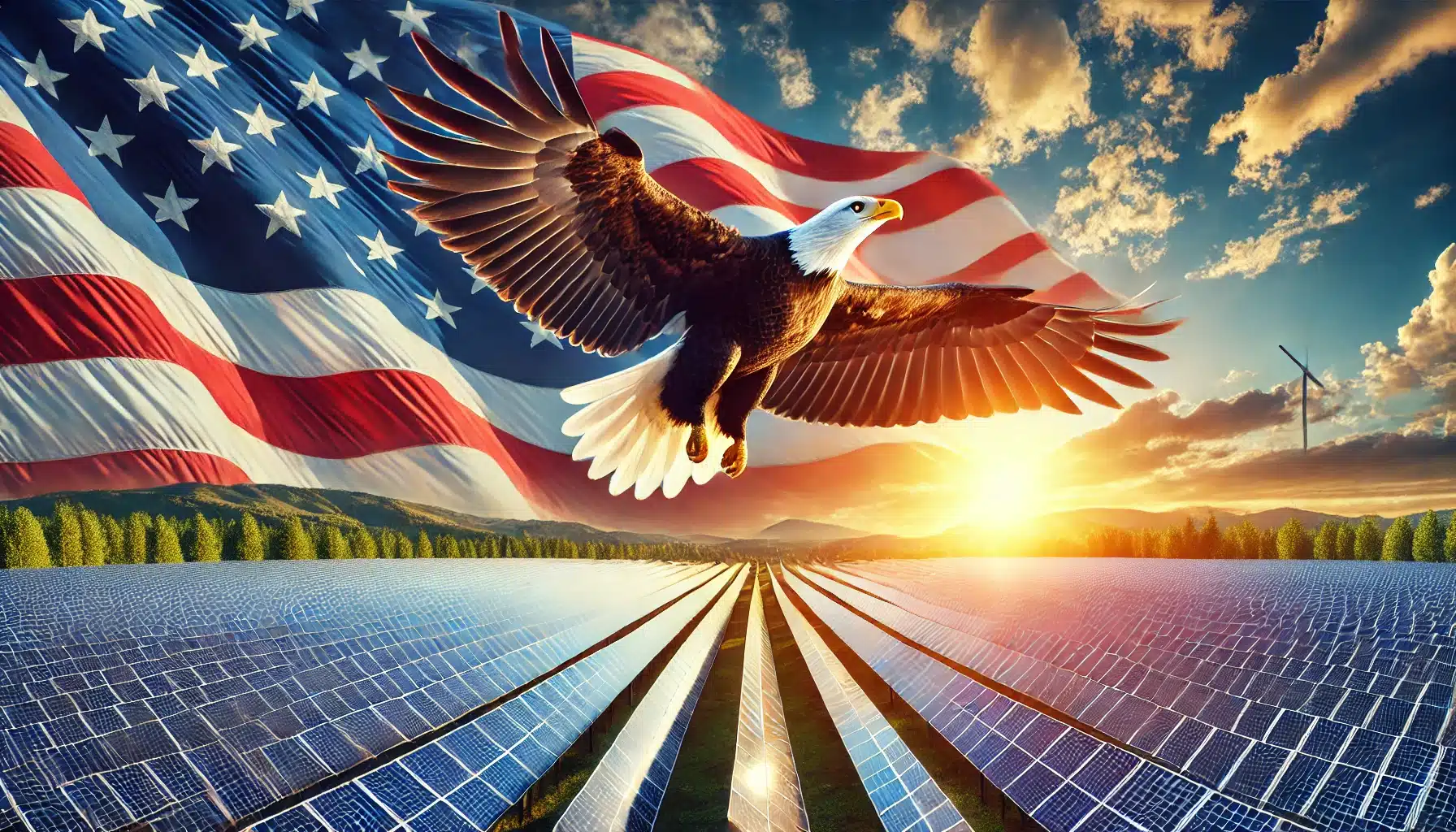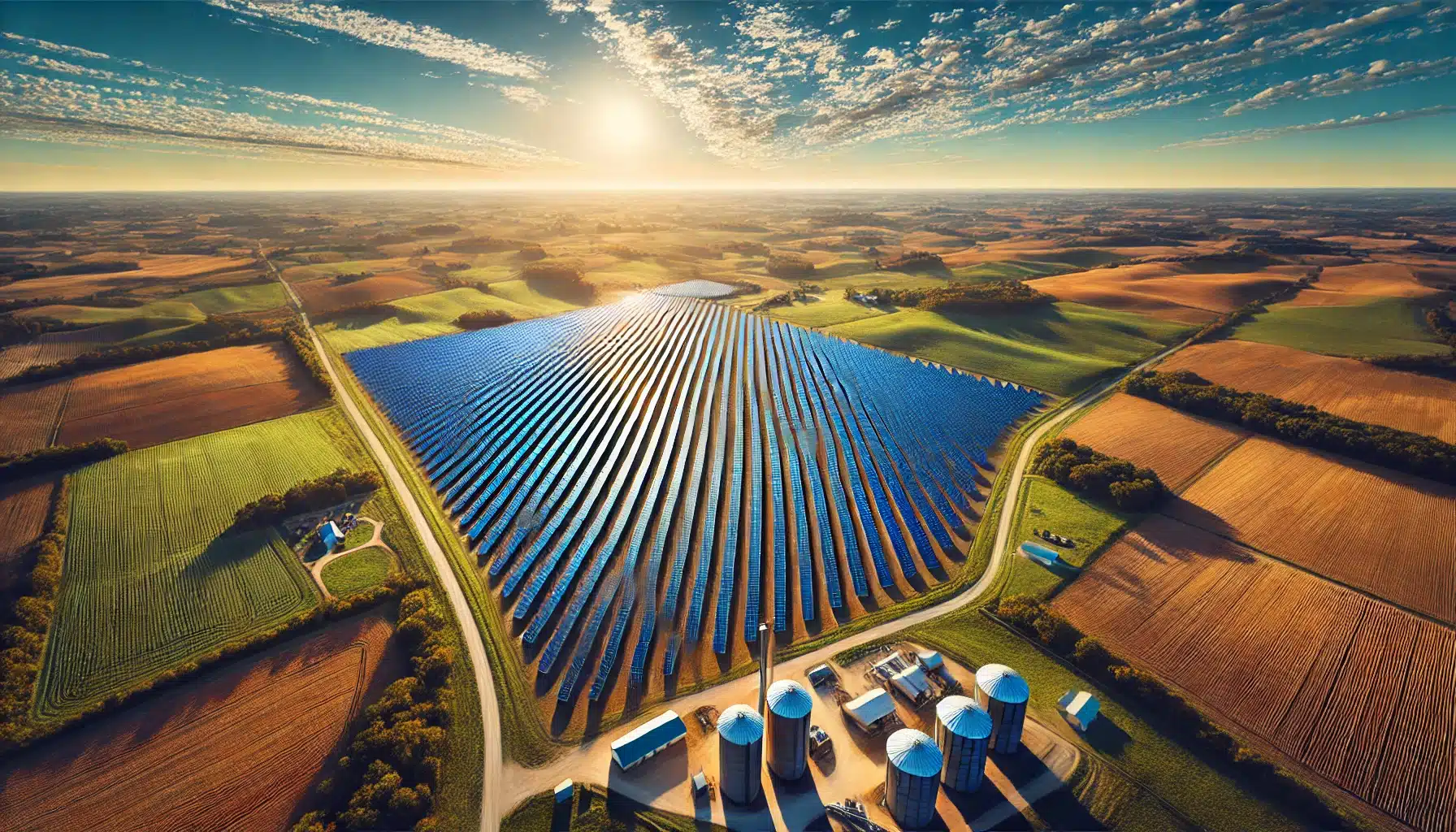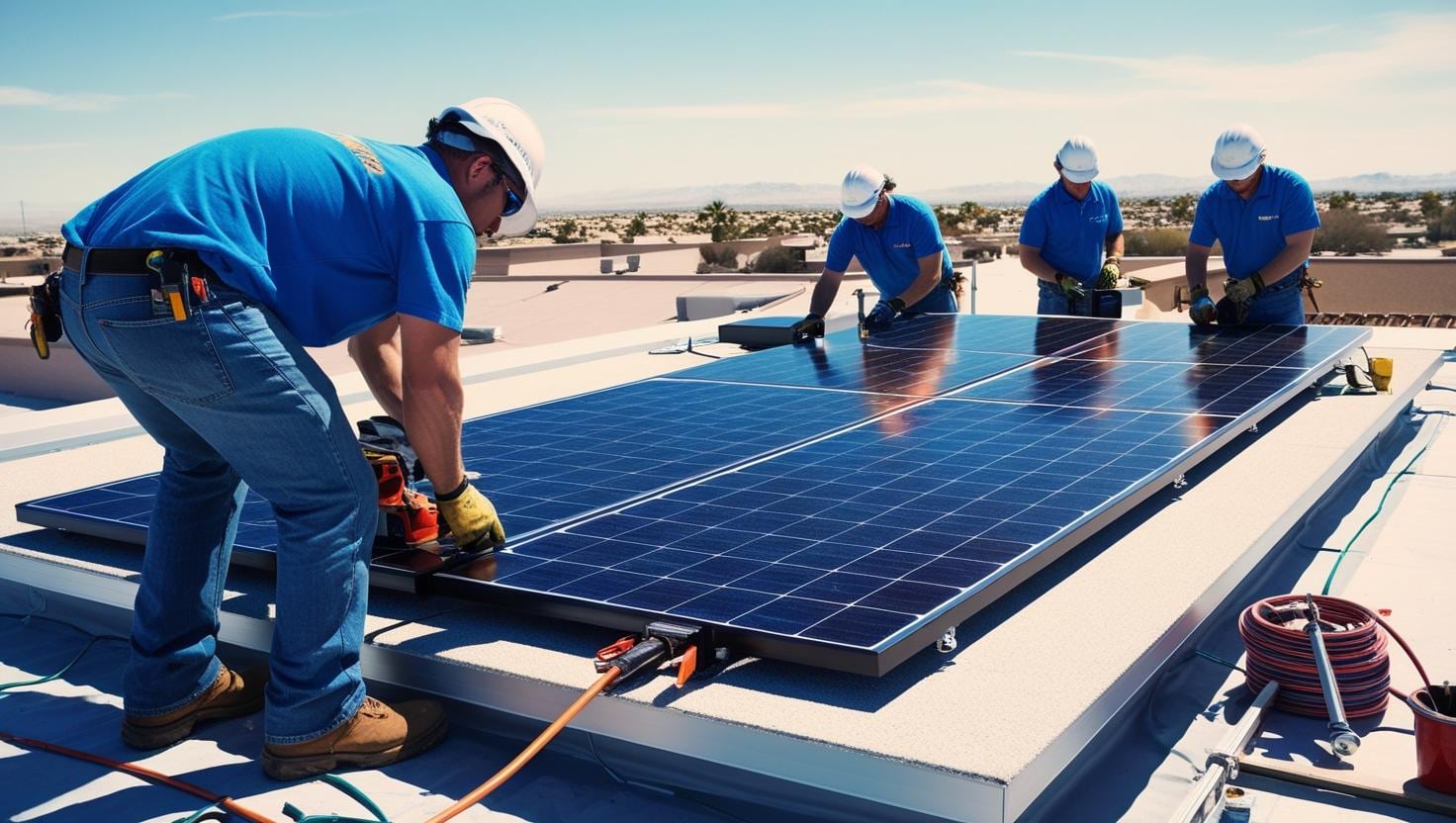Key Takeaways
- The outcome of the 2024 US presidential election will significantly influence solar energy policies, including federal incentives, subsidies, and regulations, affecting overall investment in renewable energy.
- The Inflation Reduction Act (IRA) plays a critical role in promoting solar energy and domestic manufacturing, with its future hanging in the balance depending on the electoral results and proposed changes by potential new leadership.
- Voter sentiment on climate change and bipartisan collaboration on energy policies will be pivotal in shaping the future landscape of the solar industry and clean economy in the United States.

The 2024 US presidential election could significantly reshape energy policy, affecting renewable energy initiatives and fossil fuel support. New leadership might alter solar energy subsidies and regulations, influencing federal incentives for solar development.
Voter sentiment on climate change and new leadership will be pivotal in shaping solar policy priorities. The election result will influence funding for solar infrastructure and support for the clean energy economy, reflecting varying enthusiasm for clean technologies.
The power sector stands on the cusp of transformation, and the coming months will reveal which path the nation will take.
Potential Changes in Solar Policy Based on Election Outcomes

The 2024 election could greatly influence federal incentives for solar energy development. New leadership might change solar subsidies and regulations, altering the solar industry’s landscape. For example, a Republican win might prioritize traditional energy sources over renewables, affecting the clean energy economy.
Voter sentiment on climate change will likely impact future solar policy priorities. If voters demand stronger climate action, support for clean energy innovation may rise. Conversely, a less climate-focused administration could reduce funding for solar projects.
New leadership might also change funding levels for solar infrastructure. A new administration could redirect federal funds, affecting the solar and storage industry. This election is pivotal for energy independence and the future of solar power.
Inflation Reduction Act (IRA) and Its Future
The Inflation Reduction Act (IRA) has been a cornerstone of the Biden administration’s strategy to double the share of clean electricity generation by 2030, enhancing the environmental footprint of electric vehicles and promoting clean energy. However, the outcome of the election will significantly impact the legislative landscape around tax policy and funding for clean energy projects.
A Trump administration might reduce or change the IRA, possibly repealing it on day one, which would dismantle many policies and cut budgets significantly, impacting the solar sector. In contrast, a Harris administration would support IRA implementation, promoting renewables and clean-energy technologies.
IRA adjustments are uncertain under different congressional compositions, with various potential outcomes. While a full repeal of the IRA is unlikely due to required political capital from both the House and Senate, the future of this critical legislation remains in the balance. The goal of the whole-of-government effort mobilized by President Biden and Vice President Harris is to reduce emissions, accelerate clean energy, create jobs, strengthen the economy, and invest in communities.
Impact on Investment Tax Credit (ITC) and Production Tax Credit (PTC)
Renewable energy incentives like the Investment Tax Credit (ITC) and Production Tax Credit (PTC) could be at risk if a Republican administration redirects federal funds to traditional infrastructure projects. Repealing these tax credits would require legislative action, making their future uncertain without sufficient Congressional support.
The elimination of the ITC and PTC could result in nearly a 30% decrease in renewable installations from 2024 to 2033. Investments in distributed solar and storage systems are particularly vulnerable to changes in tax credit policies, as they often cater to price-sensitive consumers.
A second Trump administration might retain some tax credits in the IRA that support domestic manufacturing, aligning with its expansion goals. The ITC enables homeowners to deduct a significant percentage of solar installation costs from their taxes, encouraging residential solar adoption.
Domestic Manufacturing and Job Creation
The Inflation Reduction Act (IRA) could create nearly 200,000 jobs, significantly boosting economic development in the clean energy sector. IRA policies have increased domestic photovoltaic panel production fourfold in two years, with capacity expected to exceed 26 GW annually under Biden.
Investment trends indicate that more capital has flowed into Republican districts than Democratic ones, with significant new factories and power projects under development in states like Louisiana, Alabama, and Arizona. Despite concerns about potential risks under a Trump administration, critical projects in many Trump-supporting states continue to benefit from IRA incentives.
There is a shared interest in reshoring and expanding energy-related production to support job growth in the solar sector.
Trade Policies and Tariffs
The Trump administration initiated tariffs on washing machines and solar panel imports with a focus on protecting domestic manufacturing. Trump’s policies initially set tariffs on solar modules at 30%, impacting pricing and availability. The tariff on Chinese solar modules rose to 50% after the pause ended in June 2024.
The Biden administration has sustained many tariffs set by Trump, with some modifications such as exemptions for certain solar panel imports. In 2024, Biden removed exemptions for bifacial solar panels from tariffs on imports. The section 201 tariffs on solar panels from all sources continued under Biden at a lower rate.
The Biden administration has implemented a two-year moratorium. This suspension applies to the collection of duties on Chinese-branded solar panels imported from Vietnam, Malaysia, Thailand, and Cambodia. Biden eliminated the bifacial exclusion that Trump tried to remove. The tariffs on solar panels and modules are estimated to have raised approximately $0.2 billion based on 2018 import values.
Permitting Reform and Grid Resilience
The Biden-Harris Administration has introduced a final rule to enhance the federal environmental review and permitting process for electric transmission projects, aiming for quicker approvals. This new rule focuses on improving the efficiency of federal environmental reviews and authorizations for these projects.
The Coordinated Interagency Transmission Authorizations and Permits (CITAP) Program aims to streamline federal permitting processes with a two-year deadline for project approvals. It will also require public participation plans to address community impacts and encourage proactive engagement with local stakeholders.
Key areas for bipartisan collaboration in the 119th Congress include permitting reform, domestic manufacturing, and grid resilience and security. Both parties see the importance of streamlining the permitting process. This approach aims to accelerate energy infrastructure projects and enhance economic growth. Effective permitting reform and enhanced grid resilience will significantly contribute to the growth of solar energy deployment and the overall economic landscape.
The Role of Federal Agencies
Federal agencies implement policies and regulations to stimulate the growth of solar energy, focusing on incentives and integration into the national grid. Agencies such as the Environmental Protection Agency (EPA) focus on implementing policies that provide incentives for solar energy development and support its integration into broader energy systems.
The Federal Energy Regulatory Commission (FERC) oversees interstate electricity distribution but does not regulate retail electricity transactions, which are managed at the state level. FERC plays an essential role in solar energy distribution.
The collective actions of federal agencies greatly influence the future landscape and policies surrounding solar energy expansion in the United States.
Opportunities for Bipartisan Collaboration
There is a strong bipartisan interest in enhancing the domestic solar supply chain to create jobs and lower costs for consumers. Both parties agree on the importance of investing in advanced solar manufacturing to ensure the U.S. remains competitive in the renewable energy sector. Collaborative efforts are being focused on improving energy infrastructure resilience against threats, a shared priority for both political parties.
Both parties view streamlining the permitting process as essential to expedite renewable energy projects and stimulate economic development. A shift in congressional leadership after the 2024 election might alter support for renewable energy programs and international climate commitments, but the drive to promote clean energy remains strong.
Despite variances in state policies, major US utilities are still pushing towards reducing carbon emissions and enhancing renewable sources.
Economic Growth and Clean Energy Innovation
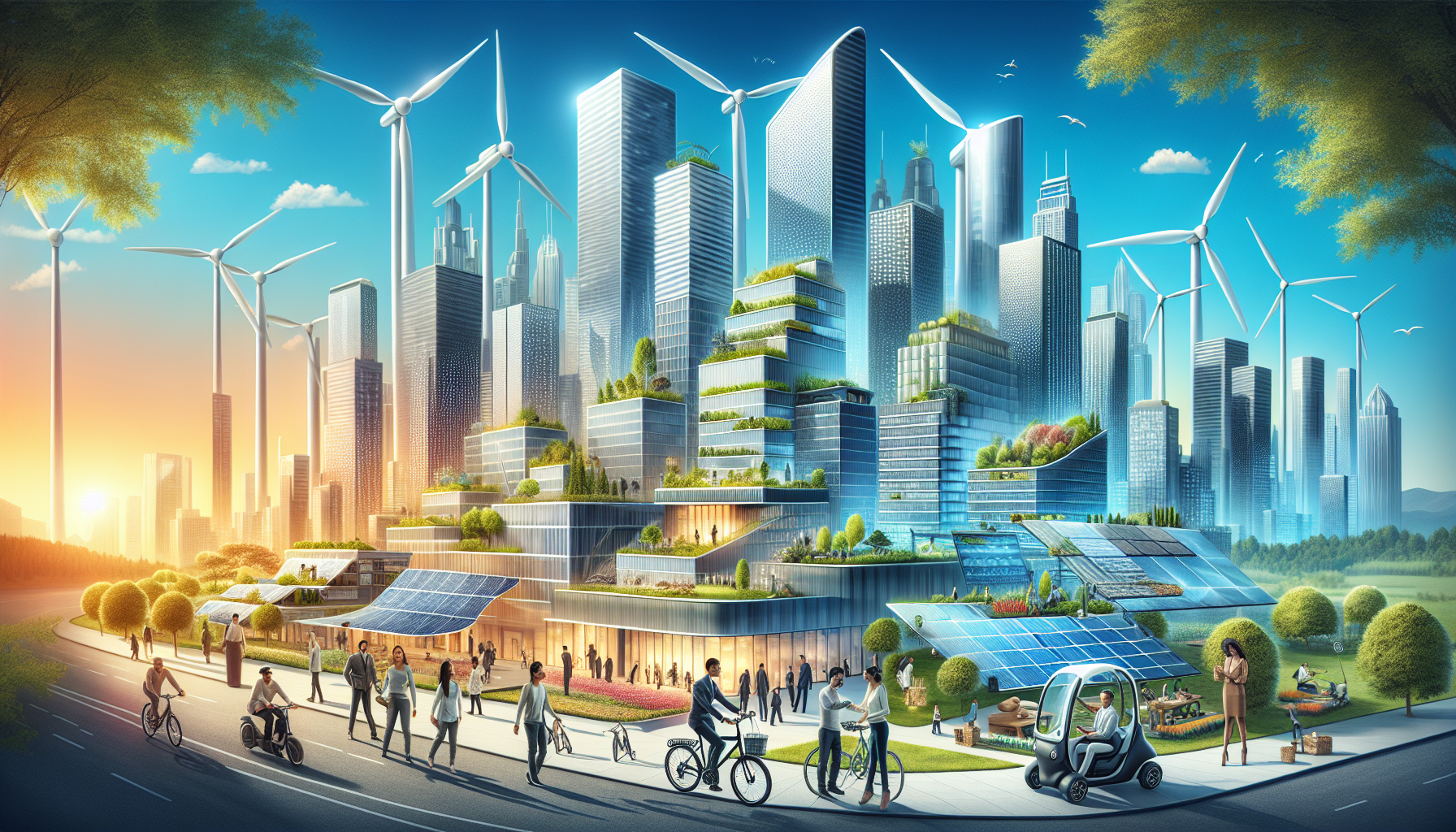
Clean energy accounted for approximately 10% of global GDP growth in 2023, highlighting its increasing economic importance. Global investments in clean energy technologies reached around USD 200 billion in 2023, a 75% increase from the previous year. These sectors employed about 36 million workers globally, emphasizing the job creation potential of clean energy innovation.
The Solar Energy Industries Association (SEIA) reported that companies added 9.4 gigawatts of new electric generation capacity in the second quarter of 2024, increasing the total to over 209 gigawatts. Since the IRA’s passage, 75 gigawatts of solar energy production have been added to the grid. The Southwest Intertie Project (SWIP-North) is expected to enhance grid resilience by providing alternative power routes during emergencies.
The upcoming US elections might lead to significant adjustments in state clean energy policies due to the partisan landscape. Investments from the Bipartisan Infrastructure Law will support building new transmission lines, enhancing grid capacity to meet clean energy demands.
The Biden-Harris administration anticipates that investments from the IRA, IIJA, and CHIPS will generate approximately 230,000 manufacturing jobs annually in the U.S. Election results in the US can significantly sway investor confidence in the renewable energy sector globally. A favorable outcome for pro-renewable candidates may lead to increased international collaboration in solar technology and markets.
Electric Vehicles and Their Connection to Solar Power
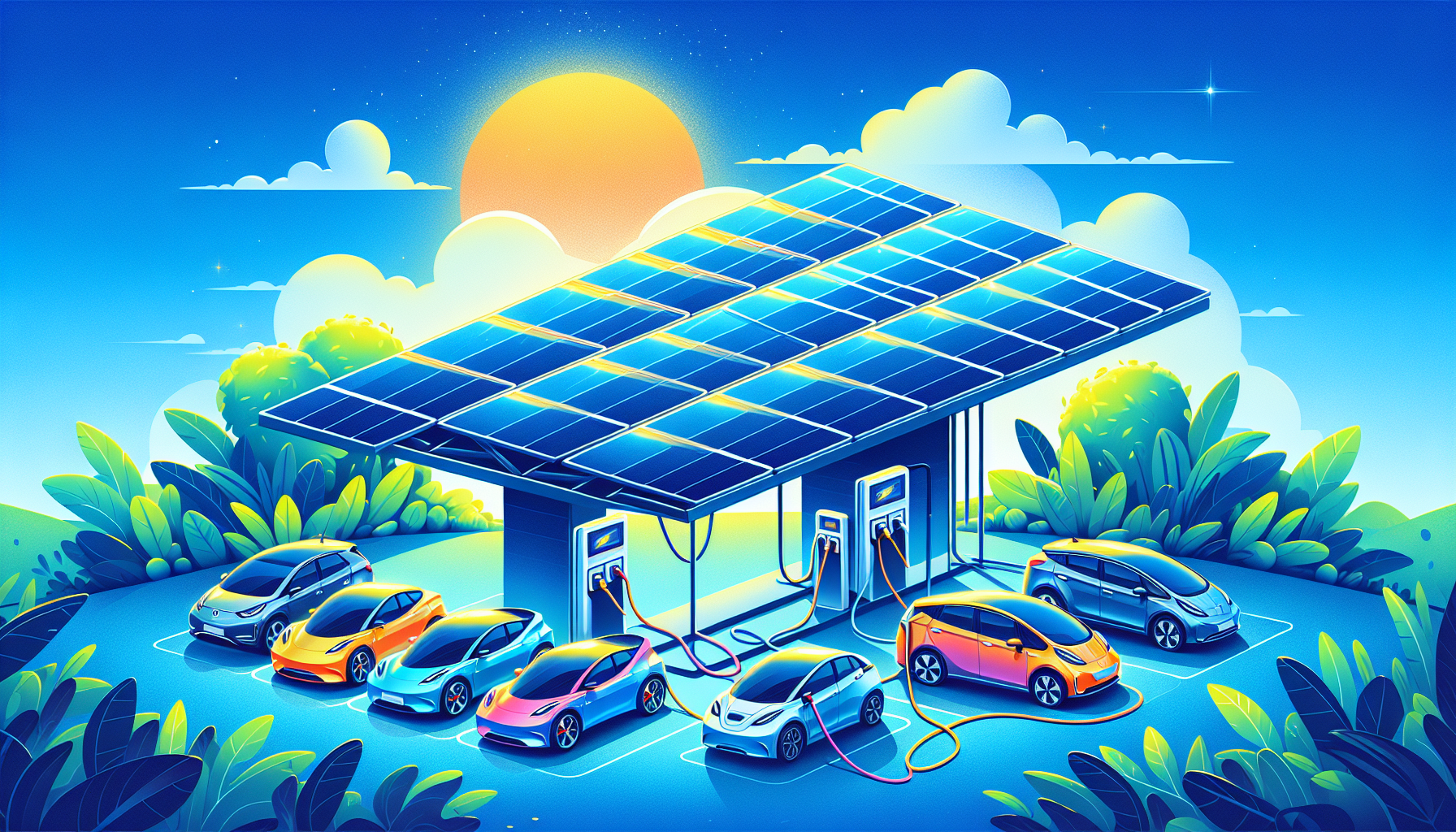
There is a significant risk of removing subsidies for electric vehicles (EVs), including the existing US$7,500 purchase credit. The U.S. Department of Energy offers grants to develop EV charging infrastructure, aiming to improve access to clean energy solutions. Tax credits for commercial electric and fuel cell vehicles incentivize businesses to transition to cleaner transportation.
The Zero Emissions Vehicle program encourages airports to adopt zero-emission vehicles, which can operate alongside solar-powered infrastructure. This synergy between EV adoption and solar power not only reduces greenhouse gas emissions but also enhances the overall energy efficiency of the transportation sector.
Integrating solar panels with EV charging stations exemplifies the future of a clean energy economy.
Climate Change and Environmental Justice
President Biden’s climate initiative primarily aims to tackle the climate crisis. The Biden-Harris Administration is enhancing national resilience to severe climate impacts. Environmental justice ensures equal protection from environmental hazards and meaningful involvement in health and environment-related decision-making for all individuals, regardless of background.
The Justice40 Initiative mandates that at least 40% of benefits from certain federal investments target disadvantaged communities. Executive Orders 12898 and 14096 guide federal agencies in developing strategies to address environmental justice for minority and low-income populations.
The EPA’s environmental justice mandate encompasses all agency functions, including permitting and standard-setting, to address public health and cumulative impacts. The EPA has established an Office of Environmental Justice to coordinate efforts focused on protecting public health in vulnerable communities.
Be Smart and Get Solar Now to Get Locked in on Tax Benefits
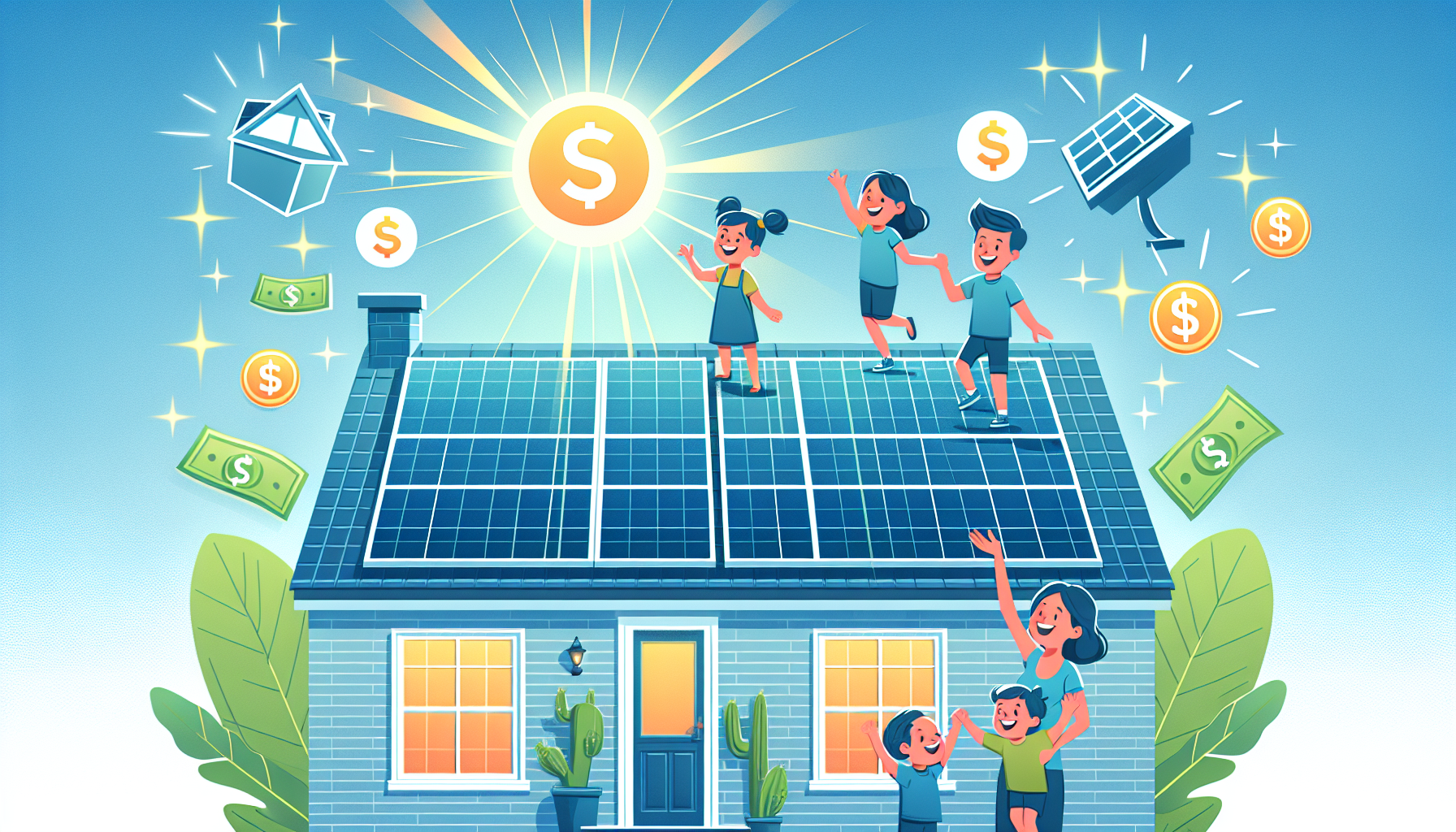
Sun Source Energy, Nevada’s top solar installer, encourages readers to get their own solar system before the election to ensure they get the best prices before any potential changes to the industry.
That said, no matter which party wins, residential solar energy is here to stay.
A Democratic victory may be better for clean energy initiatives long-term, but the Trump administration will probably lower taxes and interest rates, potentially making it easier for people to finance solar systems soon.
Regardless of the election outcome, residential solar remains a strong and viable option for homeowners looking to invest in renewable energy. The continued growth and support for solar energy across various states and communities ensure that residential solar will remain a beneficial and stable choice.
Given the uncertainty around future policy changes and the current favorable policies, now is the opportune time to invest in solar power. Taking advantage of existing tax credits and incentives can significantly reduce installation costs and lock in benefits before any potential shifts in energy policy.
Solar panels not only help to reduce greenhouse gas emissions but also offer substantial savings on energy costs in the long run.
Summary
In summary, the 2024 US presidential election is a critical juncture for the future of renewable energy and solar power. The election’s outcome will determine the direction of federal incentives, the fate of key legislation like the IRA, and the overall support for clean energy initiatives. Voter sentiment and changes in leadership will play pivotal roles in shaping the energy policy landscape.
As we look ahead, it is clear that the renewable energy sector holds immense potential for economic growth, job creation, and environmental sustainability. The integration of solar power with electric vehicles, the emphasis on environmental justice, and the global market implications underscore the transformative impact of clean energy innovation.
Now is the time to support and invest in solar energy, taking advantage of current policies and incentives to secure a sustainable future.
Frequently Asked Questions
What is the potential job creation attributed to the IRA?
The IRA could potentially create nearly 200,000 jobs, significantly impacting the job market. This job creation reflects the initiative’s capacity to stimulate economic growth and employment opportunities.
What recent growth did the Solar Energy Industries Association (SEIA) report in the solar sector for the second quarter of 2024?
The Solar Energy Industries Association (SEIA) reported a significant growth in the solar sector, with the addition of 9.4 gigawatts of new electric generation capacity in the second quarter of 2024, bringing the total to over 209 gigawatts. This marks a positive trend in the expansion of solar energy infrastructure.
How much solar energy production has been added to the grid since the IRA’s passage?
Since the passage of the IRA, 75 gigawatts of solar energy production have been added to the grid. This substantial increase underscores the growing commitment to renewable energy sources.


